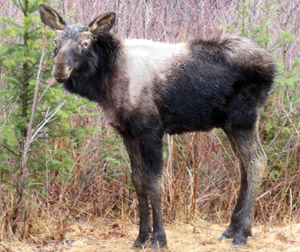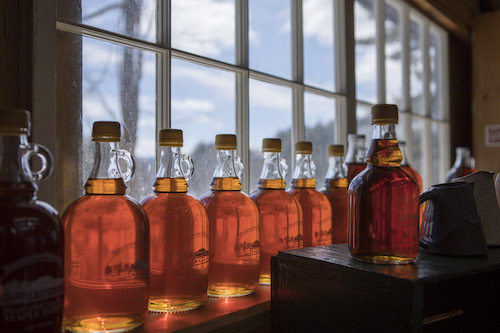Climate change isn’t just about ice caps and polar bears. It’s both local and global; we see its effects in our backyards, and we hear about more wide-reaching impacts on human health, the environment, and the economy every day. According to a 2018 US government report, average temperatures in the Northeast will rise faster than any other region in the lower 48 states. And winters will warm three times as fast as the average temperature. Unfortunately, early springs and mild winters are only the tip of this melting iceberg.
Here are ten surprising effects of climate change in our region.
1. More disease-carrying bugs and agricultural pests
You’ve probably heard that warming temperatures in the Northeast means that tick populations are moving northward—and bringing Lyme disease with them. But ticks aren’t the only pests proliferating under warming conditions. Stink bugs are already destroying apple crops in the Hudson Valley, and climate change isn’t helping. Like with ticks, longer warm seasons allow stink bugs to reproduce more than in past years. They’re especially pesky because of their natural resistance to conventional pesticides, which means farmers have to either use more than is considered safe or explore other options.
2. A warming climate hurts wildlife too
Have you seen this picture of a balding moose? It’s not your usual case of alopecia. Earlier springs mean more time for moose ticks to reproduce, exploding their populations. Ticks are mostly found at the southern edge of moose habitat, where warming is more prevalent. Scientists estimate the average affected moose hosts more than 47,000 ticks on their body. This drives adult moose crazy with irritation, causing them to rub their bodies against trees to deal with the itch. This has the unintended consequence of scraping off large amounts of fur, which is necessary for moose to stay warm during winter.
For moose calves, it’s even bleaker. Biologists have found many calves that died of blood loss because of the tens of thousands of parasites feeding on them.


3. Including birds!
Loons are moving up and out. The Audubon Society estimates that by 2080, loons will have lost more than half of their current summer habitat and 75% of their current winter habitat, instead opting for cooler temperatures further north. Check out their habitat-climate model here.
4. Livestock can’t take the heat
Dairy production, a key part of our agricultural economy in the Northeast, is expected to take a hit by increasing temperatures, during heat waves in particular. High temperatures combined with humidity can cause heat stress in farm animals. The problem is most severe when hot and humid conditions persist overnight, giving the animals no reprieve. Experts estimate that the environmental discomfort cows are experiencing will result in lower milk yields and lower calving rates—which means increased operation and production costs in an already volatile industry.


5. Warming waters
Fisheries will be affected by changes in water temperature. Warming waters are more hospitable to invasive species and shift the ranges or lifecycle timing of certain fish species. For instance, marine biologists are watching out for a bacterial shell disease that infects lobsters in warmer waters. Right now, cooler temperatures prevent this bacteria from proliferating. But if the Atlantic warms enough, this disease may cause reduced catch.
6. Syrup shortages
Maple syrup in the Northeast is a cultural tradition and $250 million industry, but maple trees also struggle in warmer temperatures. Compared to 50 years ago, sugaring seasons are already about 3 days shorter overall, beginning a week earlier and ending 10 days earlier. The syrup industry creates jobs and grows our economy—what will happen when sap production drops?


7. Dimished Fall foliage
As climate change delays colder autumn temperatures, fall foliage will peak later. While warmer temperatures will result in a later color change for some trees, others will not be able to adapt. That means fall colors will become less synchronized, producing a more muted color peak. Increases in precipitation may also result in a shorter foliage season, as heavy rains bring down leaves and the cloudier days can make viewing harder.
8. Impacts on tourism
In Vermont, the bustling winter tourism and recreation economy generates over $1 billion in revenue each year. Longterm projections of average temperatures in the northeast paint a sobering picture for winter-based industries. Low-snowfall winters, like the 2015-2016 season, force ski resorts to manufacture and maintain snow, an extremely expensive endeavor. (Plus, temperatures must be below 26 degrees to make snow in the first place.) In 30-40 years, average temperatures will have risen to the point where winter precipitation may fall more often as rain rather than as snow, affecting the snowpack at ski areas and on snowmobile trails.
9. Higher precipitation rates
Between 1958 and 2012, the Northeast saw more than a 70% increase in the amount of rainfall measured during heavy precipitation events—more than in any other region in the United States. Sea level rise and more frequent heavy rains are expected to increase flooding and storm surge, threatening infrastructure. The rapid run-off from increased precipitation levels is expected to affect New York City’s clean drinking water supply. Rising sea levels will also lead to increased saltwater intrusion, which is when seawater travels up freshwater systems—like the Hudson River which serves as a backup water supply. New York City’s quest for alternative drinking water is likely to inflict a high economic burden.
10. Impacts on human health
Northern U.S. cities will see more heat-related deaths because of insufficient adaptation to extreme heat events. Additionally, these higher temperatures will exacerbate the problem of urban air pollution, such as ground-level ozone, elevating asthma and mortality rates. Climate change is also lengthening the pollen seasons for common allergens like ragweed, particularly in northern portions of the U.S.
This post is part of our Knowledge is Power series. Solar has changed a lot in the last couple years — learn how.





